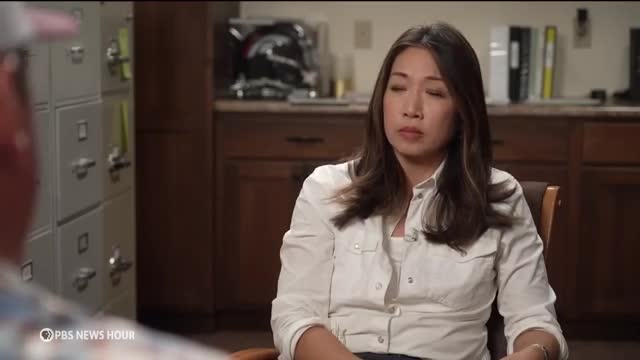Latoya Ruby Frazier redefines art with Monuments of Solidarity

This article was created by AI summarizing key points discussed. AI makes mistakes, so for full details and context, please refer to the video of the full meeting. Please report any errors so we can fix them. Report an error »

In a recent PBS NewsHour segment, the challenges of water conservation in agriculture and the transformative power of art were highlighted through two compelling stories.
In western Kansas, farmer Peterson has taken significant steps to address the ongoing water crisis by investing in a new irrigation system that enhances water efficiency. He has also shifted from traditional corn crops to sorghum, a drought-resistant grain suitable for both cattle and human consumption. These changes have led to a 15% reduction in his water usage, which he hopes will ensure the sustainability of his family’s farming legacy. However, the long-term viability of voluntary conservation efforts remains uncertain, as unpredictable weather patterns continue to pose a threat to local agriculture.
Meanwhile, artist Latoya Ruby Frazier is making waves with her retrospective exhibition, \"Monuments of Solidarity,\" at the Museum of Modern Art in New York. Frazier’s work focuses on the intersection of art and social justice, using photography to document the lives of marginalized communities. Her exhibition features a range of installations that honor workers and address economic and social issues, including a poignant series on the Flint water crisis. Frazier emphasizes the importance of collaboration with her subjects, allowing them to dictate how they wish to be represented.
Through her art, Frazier aims to inspire viewers to recognize their own power in effecting change, highlighting the role of artists as witnesses to societal issues. Her work serves as a reminder of the potential for everyday citizens to improve their circumstances, reinforcing the idea that art can be a powerful tool for advocacy and community empowerment.
Both stories underscore the critical importance of sustainability in agriculture and the role of art in fostering social awareness and change, reflecting broader themes of resilience and community in the face of adversity.
In western Kansas, farmer Peterson has taken significant steps to address the ongoing water crisis by investing in a new irrigation system that enhances water efficiency. He has also shifted from traditional corn crops to sorghum, a drought-resistant grain suitable for both cattle and human consumption. These changes have led to a 15% reduction in his water usage, which he hopes will ensure the sustainability of his family’s farming legacy. However, the long-term viability of voluntary conservation efforts remains uncertain, as unpredictable weather patterns continue to pose a threat to local agriculture.
Meanwhile, artist Latoya Ruby Frazier is making waves with her retrospective exhibition, \"Monuments of Solidarity,\" at the Museum of Modern Art in New York. Frazier’s work focuses on the intersection of art and social justice, using photography to document the lives of marginalized communities. Her exhibition features a range of installations that honor workers and address economic and social issues, including a poignant series on the Flint water crisis. Frazier emphasizes the importance of collaboration with her subjects, allowing them to dictate how they wish to be represented.
Through her art, Frazier aims to inspire viewers to recognize their own power in effecting change, highlighting the role of artists as witnesses to societal issues. Her work serves as a reminder of the potential for everyday citizens to improve their circumstances, reinforcing the idea that art can be a powerful tool for advocacy and community empowerment.
Both stories underscore the critical importance of sustainability in agriculture and the role of art in fostering social awareness and change, reflecting broader themes of resilience and community in the face of adversity.
View full meeting
This article is based on a recent meeting—watch the full video and explore the complete transcript for deeper insights into the discussion.
View full meeting